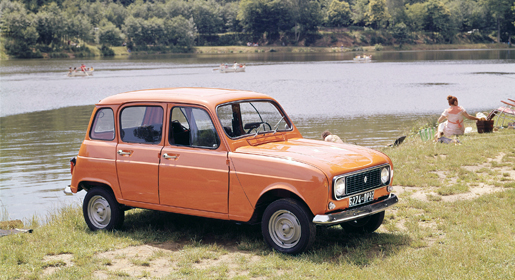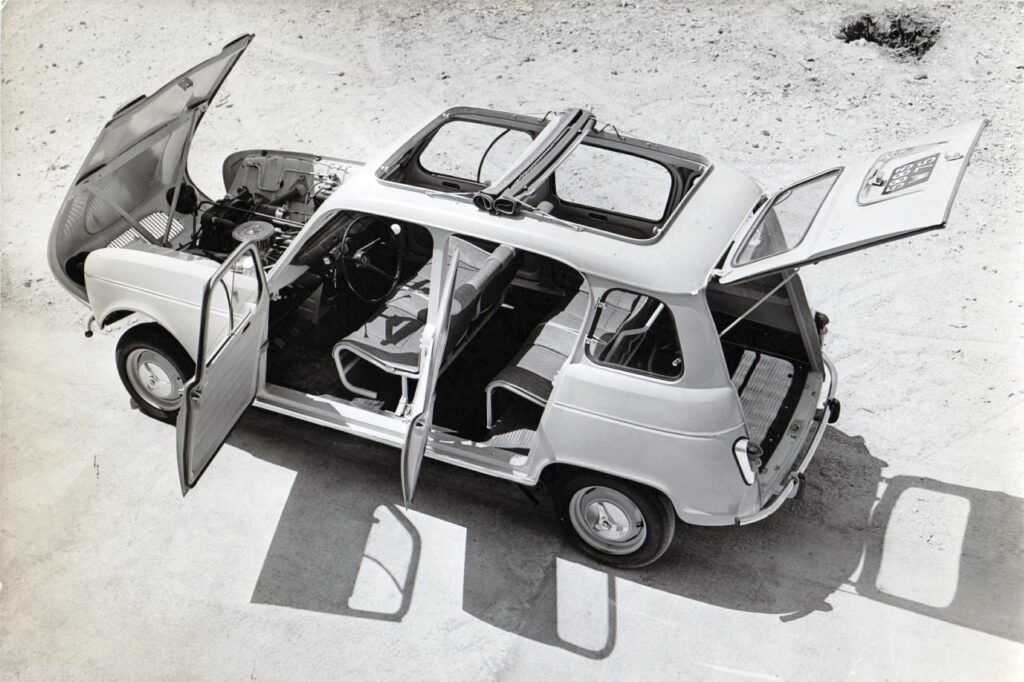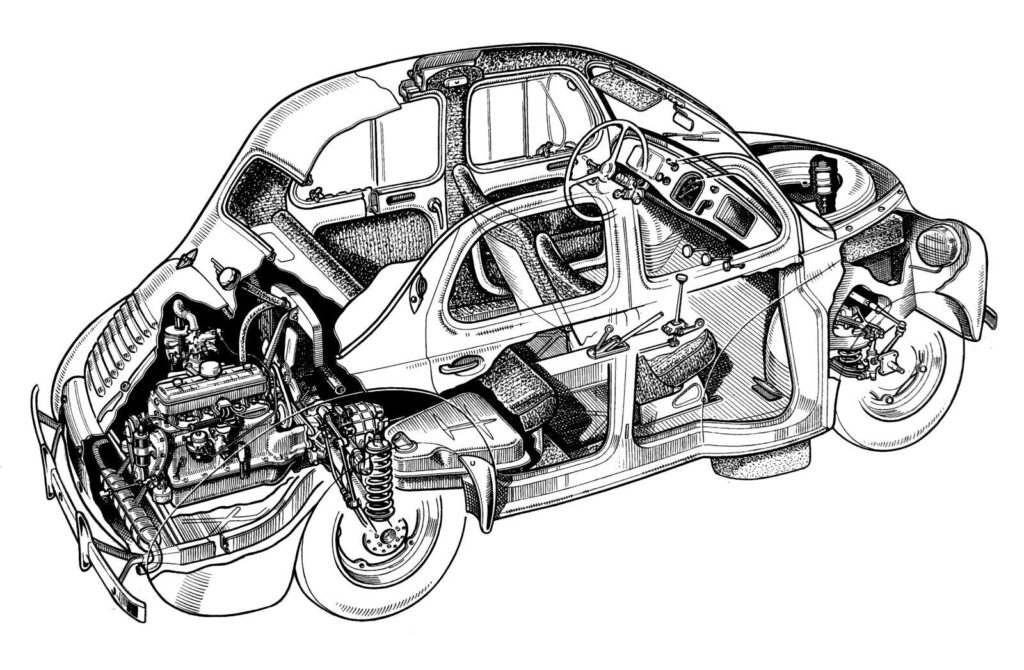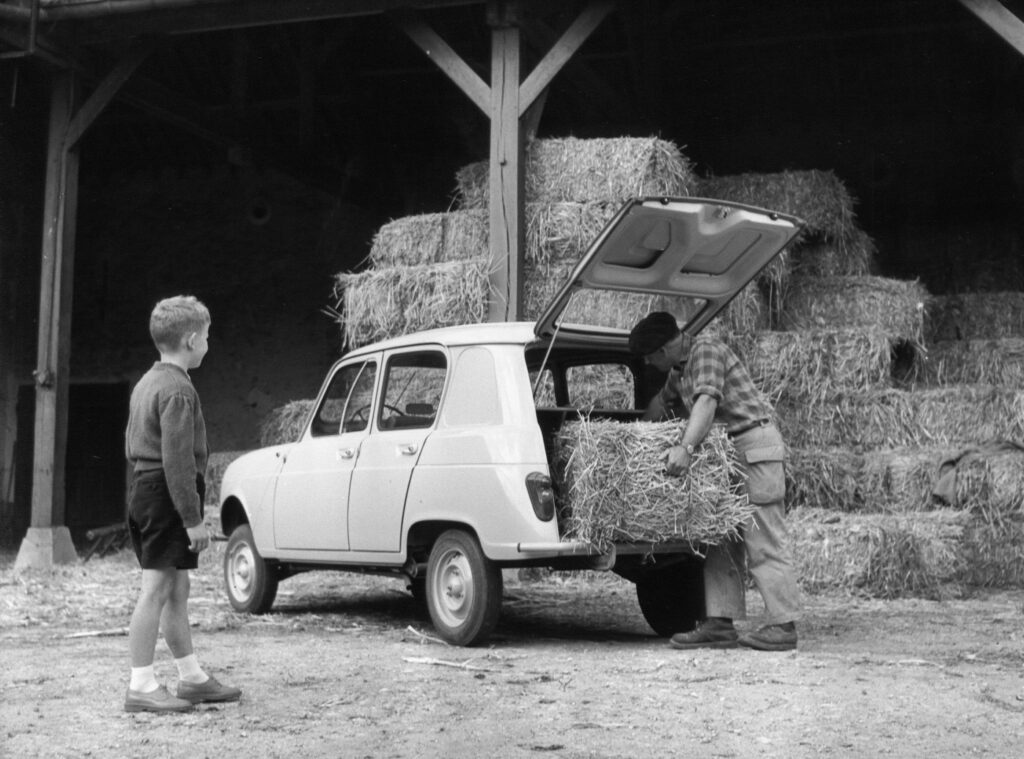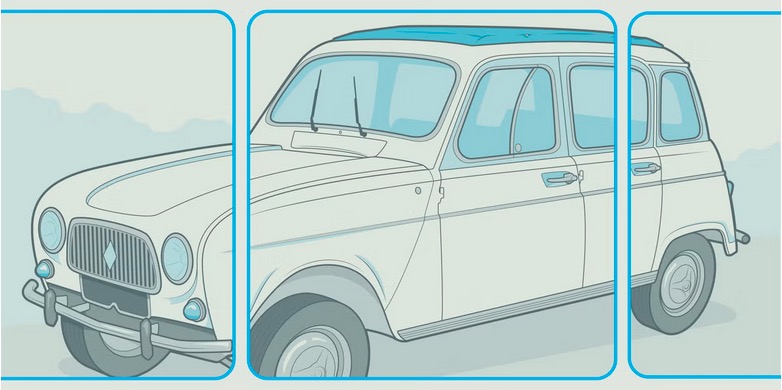Chris Perkins wrote a revealing article for Road & Track about the brilliance of the Renault 4. While we don’t generally focus on Renault, the comparisons and differences he cites in his article provide an interesting perspective of the two. He also explains why the 4’s suspension is longer on one side than the other.
The Renault 4, first introduced in 1961 and produced thru to 1992 in France (1994 in Slovenia), was the company’s response to the success of the 2CV.
Up until the 4, Renault’s small car offering was the 4CV, developed in a clandestine manner during WWII, when Renault, like Citroën, were forced to build vehicles for Germans.
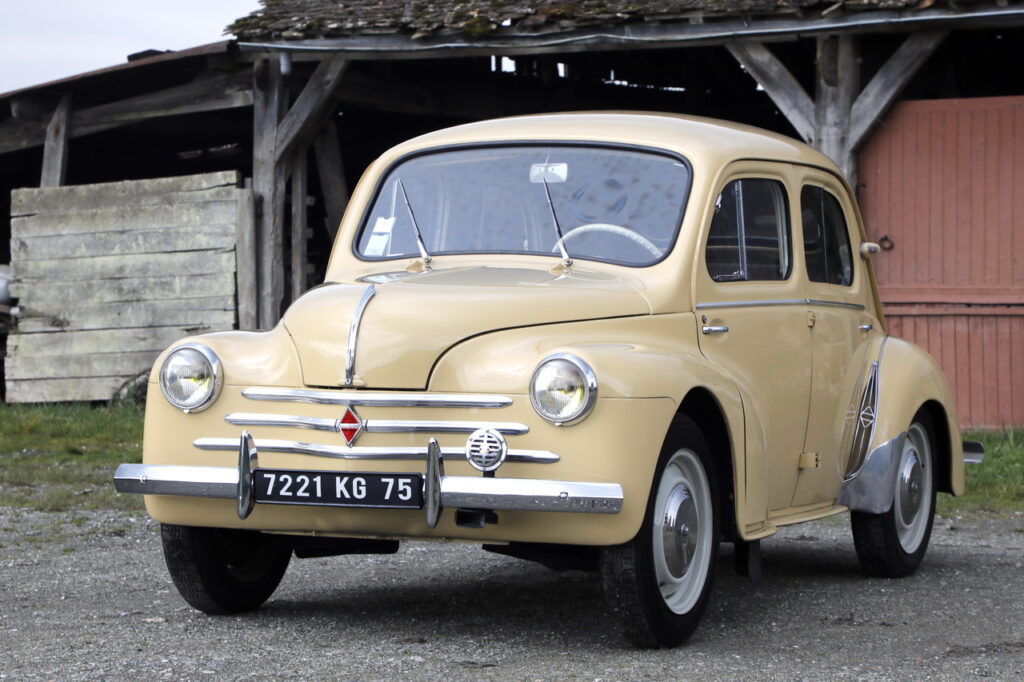

The 4CV was more like the Volkswagen Beetle — rear-wheel-drive with its 4 cylinder engine mounted in the rear, (but water-cooled not air-cooled like the Beetle).
The 4CV was superseded by the more contemporary bodied Dauphine in 1956, however still rear-wheel-drive with the a rear engine layout.
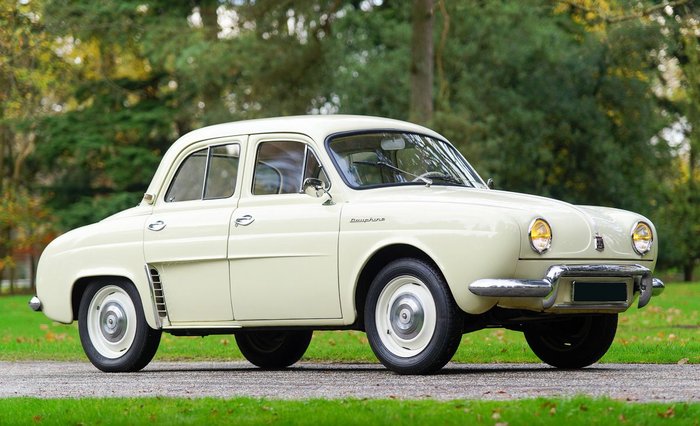
Renault wanted a more modern and versatile utility car to compete with the engineering brilliance of Citroën’s 2CV. By 1961 they were able to introduce the Renault 4 with a large space hatchback body that would serve both rural and urban folk in France and other parts of the world.
The four-cylinder engine was now in the front and front-wheel-drive was achieved with the gearbox forward of it – in the same manner Citroën used for the Traction Avant.
While Renault took a more simplistic approach to achieve soft suspension using torsion bars, the 4 had many features of the 2CV. In this article Chris discusses the similarities and the differences between the two the and gives his driving impression of the Renault 4; https://www.roadandtrack.com/car-culture/a45737315/renault-4-history/.
